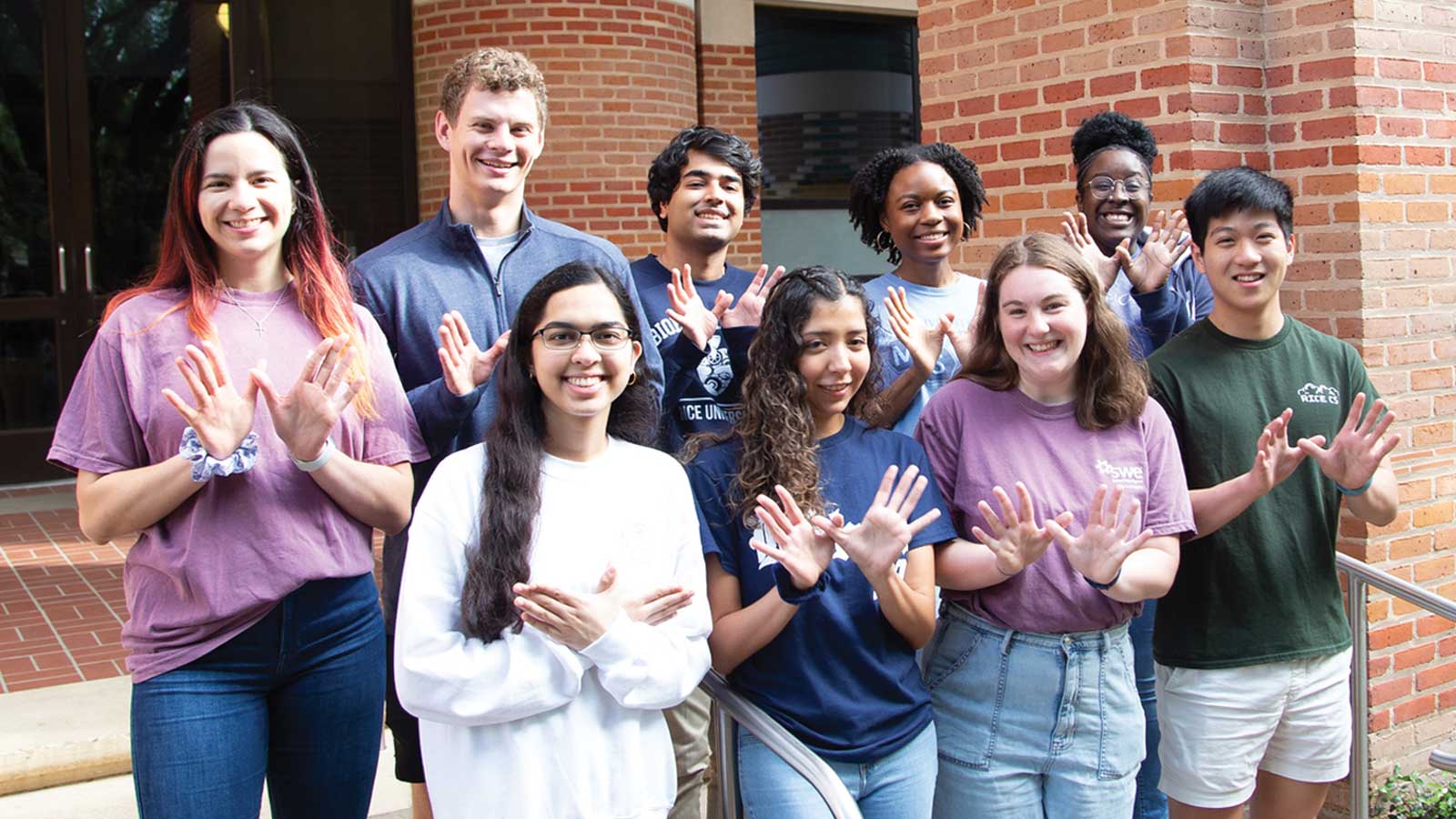The George R. Brown School of Engineering at Rice University has launched a school-wide center devoted to current and new diversity and inclusion initiatives. The Diversity, Equity and Inclusion Outreach Center, housed within Academic Affairs, will develop evidence-based strategic initiatives to improve recruitment, retention and support for populations historically excluded from STEM.
“Ensuring all students experience a sense of belonging and have equal access to resources is essential to helping them succeed,” said Renata Ramos, associate dean of Academic Affairs and teaching professor of bioengineering. “The DEI Outreach Center lives within Academic Affairs because we feel strongly that it is an essential component of our students’ academic experience.”
Diversity, equity and inclusion have always played an integral role in the school’s culture. The establishment of the center and its focus on collaboration, assessment and metrics builds upon the foundation laid by many across the school.
For example, for the past four decades, Richard Tapia — University Professor and the Maxfield-Oshman Professor in Engineering — has led Rice’s efforts to prepare underrepresented groups for success in STEM fields. The Tapia Center for Excellence and Equity in Education provides opportunities for both emerging scholars and K-12 educators.
“Our faculty, staff, and students are doing outstanding work in this area — most of which is taking place in individual departments, educational programs or research groups,” said Luay Nakhleh, William and Stephanie Sick Dean Engineering. “I’m excited to bring all of these elements together to share best practices and collaborate so that our impact is much larger than the sum of the individual efforts. We are fortunate to have Renata steering the school’s DEI efforts and Cecilia Fernández, our assistant director of diversity, equity, inclusion and outreach, leading and developing the center’s initiatives.”
Tapia said, “This is a wonderful and progressive commitment by Rice, the school and the engineering dean. I look forward to aligning my efforts and the activities of the Tapia Center to promote the DEI Outreach Center’s success.”
The primary goals for the center include:
- Building an inclusive environment throughout the school
- Ensuring that a smooth trajectory is in place from high school to positions as engineering faculty
- Developing strategic partnerships that facilitate engineering pathways for students from communities historically excluded from STEM
“We’re not as diverse as we could be,” said Fernández. “Through the surveys we’ve conducted and more that are underway, we’re determining how the school can better support students, faculty, and staff from historically excluded communities.”
The DEI Outreach Center is collaborating with various on-campus entities to collect and analyze information regarding how the school can improve diversity and develop a more inclusive environment. Using metrics outlined in the center’s strategic plan, measurable goals will be established to assess progress.
In addition, each of the nine engineering departments has established a DEI committee responsible for setting measurable departmental objectives that align with school goals, including recruitment and retention of doctoral students and faculty from communities historically excluded from STEM.
“I am not satisfied with the diversity of our faculty and student body,” Nakhleh said. “The center will collect data — quantitative and qualitative — to help us find ways to improve diversity. The data will also help us understand how we are doing in terms of equity and inclusion. When DEI is discussed, the focus is too often on diversity rather than the other components which are equally important. I want to ensure our school is equitable and inclusive when it comes to recruiting and retaining the best faculty and students.”
The school of engineering has allocated funds for the DEI Outreach Center with additional fundraising efforts planned.
“Philanthropy will be a key driver for this programming,” said Ramos. “Graduate students are the interface between undergraduates and faculty. Fellowships are needed to encourage more undergraduates to pursue advanced degrees and to attract a diverse pool of top graduate candidates, especially those who are first in their family to attend college. Diverse graduate students are important to faculty recruiting, our research focus areas and the future of engineering education.”
“We want to diversify both the Ph.D. student and faculty population,” Fernández said. “By 2027, women will represent 40 percent of doctoral students, and 35 percent of the Ph.D. population will originate from historically excluded communities. Likewise, 35 percent of our tenure-track faculty will be from communities that have been historically excluded from engineering fields.”
Ramos and Fernández hope to form partnerships with other institutions in Houston and across the state, including non-profit organizations, corporations and foundations interested in advancing equity in STEM.

